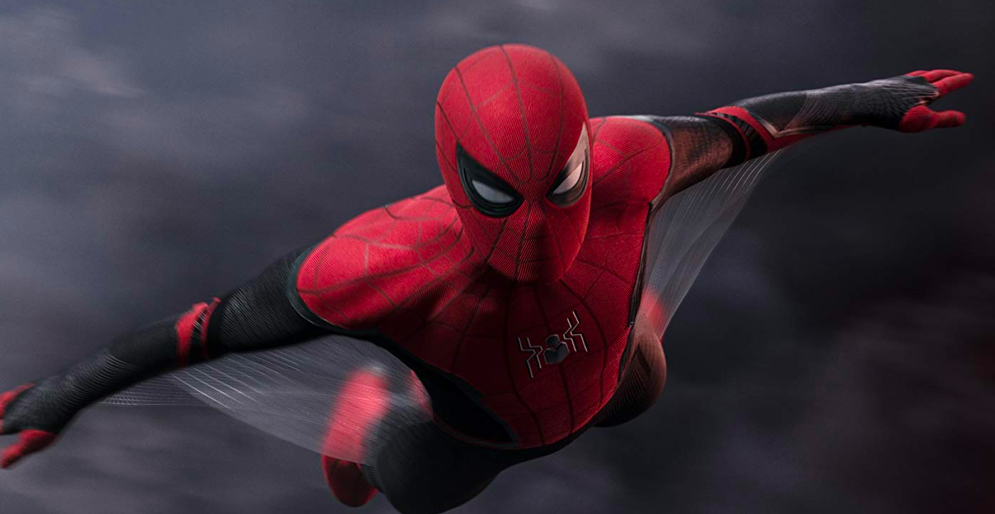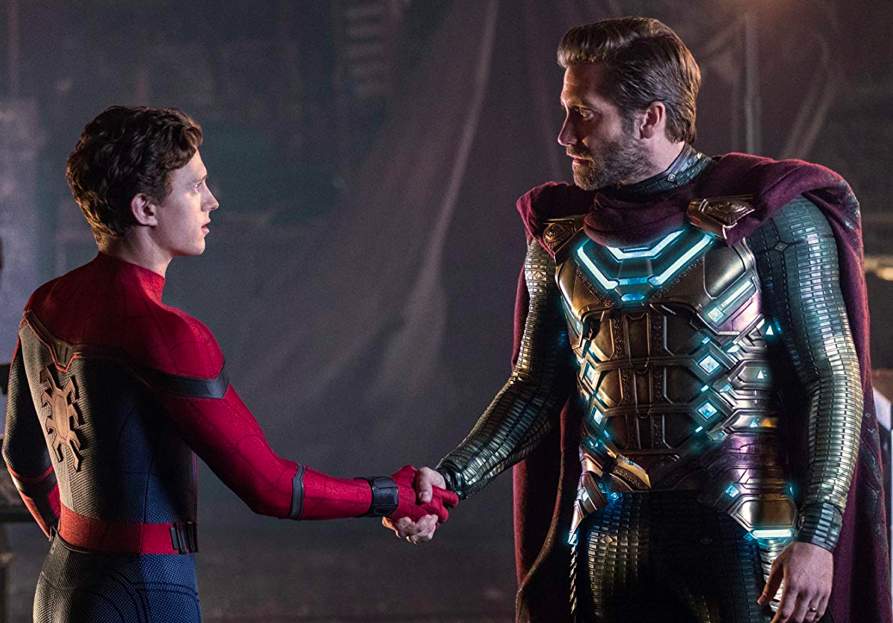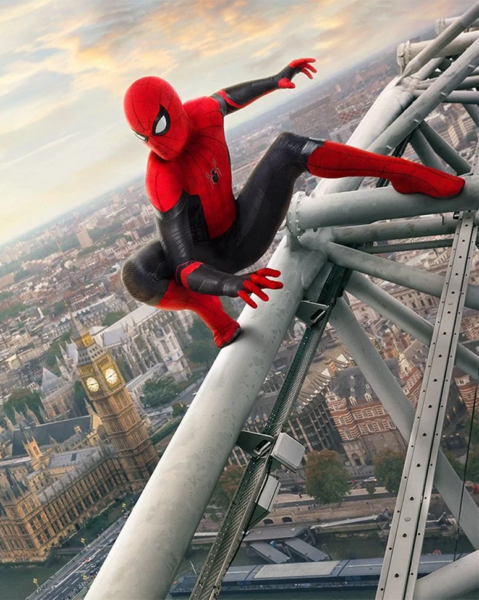There have been so many Spider-Men over the past two decades that it’s difficult to keep track of all of them.
First there was Sam Raimi’s Spider-Man, played by Tobey Maguire. The critical and commercial success of Raimi’s first two films in the early aughts helped usher in the superhero era in Hollywood. The franchise ran out of steam by the third instalment, however, leading to the first attempt at a reboot under the helm of Marc Webb. The Amazing Spider-Man, starring Andrew Garfield, produced two movies, which showed flashes of inspiration but ultimately struggled to connect with audiences.
And, of course, there was the musical.
I attended one of the much-maligned preview performances of Julie Taymor and U2’s Spider-Man: Turn Off the Dark (with Reeve Carney in the title role) during its brief preview run on Broadway, before the show was retooled by a different creative team. I look back on it fondly as the most absurd entertainment experience of my life. It featured Spider-Man dance-fighting against villains whose costumes looked like inflatable pool toys. The main villain was a giant spider who sang a lengthy number about her love of shoes. (Why shoes? Because she has eight legs, the song emphasized.) The performance ran over three hours, including several periods of dead time with actors suspended above the audience in midair because of malfunctioning equipment. Sitting in the theater, watching the multimillion-dollar fiasco unravel before me, I remember thinking: Can anyone rescue this character?

The franchise had been introduced and reintroduced to the point of self-parody. It was on autopilot: great power, great responsibility, green goblins, and assorted love interests. A new Spider-Man needed someone to save the franchise from the Spider-Men who preceded it. True to its source material, that hero would turn out to be a young underdog who stepped up when given the opportunity.
Jon Watts, a director of small-budget projects and practically unknown in Hollywood before the critical success of his indie thriller Cop Car in 2015, suddenly found himself taking the reins of one of the most recognizable superhero franchises in the world.
“It was pretty thrilling. I was able to use a lot of my personal emotions to inform the story,” Watts tells Boxoffice. “Spider-Man: Homecoming is about a kid who wants to prove himself and no one will listen to him.”
The director lets out a nervous laugh before adding, “When he finally gets the chance to step up, he completely screws up.”
Watts is referring to a memorable scene in Homecoming, in which his Spider-Man (played by Tom Holland) takes the initiative to save passengers from a disintegrating Staten Island Ferry—only to fail spectacularly and force Iron Man to bail him out at the last minute.
“Those were the kind of nerves I had about jumping from something as small as Cop Car to something as big as Homecoming,” he says. “I really wanted to prove myself and show that I could make a movie like this, but I had this terrible fear that I would somehow accidentally screw things up and split the Staten Island Ferry in half. I took a lot of those emotions and translated them into something I could use for the movie.”
Those feelings helped give Spider-Man: Homecoming (2017) a grounded quality, giving equal weight to the protagonist’s anxieties about high school life and his role as an emerging hero. The movie was hailed as a welcome, and overdue, return to form for the superhero franchise. It went on to earn $334 domestically and $880 million worldwide, the highest-grossing entry in the series since Raimi’s trilogy.
“One of the beneficial things of there having been so many previous Spider-Man films is that it limited some of the things you could do,” says Watts, when asked about his approach to the film’s tone. “Once we made the rule that we didn’t want to show anything that we had already seen before, it really helped us eliminate a lot of extraneous ideas, concepts, visuals, and story points. It made us focus on finding new dimensions to explore within the story. We explored the Vulture character a bit more [the film’s villain, played by Michael Keaton], and gave the story a much stronger focus on the high school component–which had been limited to the first act of the other Spider-Man films.”
Watts’s approach to Spider-Man stems from the unique deal struck between Sony and Disney’s Marvel Cinematic Universe, essentially a cross-studio partnership in which the two majors share custody of the character across their respective franchises. Tom Holland’s Spider-Man was first introduced in Disney’s Captain America: Civil War (2017) and has since appeared in Avengers: Infinity War (2018) and Avengers: Endgame (2019), helping expand and develop the character between Sony’s standalone films.
“One thing that had never been explored before was Spider-Man being part of a larger Marvel universe,” says Watts. “Up until Civil War, Spider-Man had been portrayed as the only superhero in the world in his movies.”
Being part of the Marvel Cinematic Universe—New York City’s friendly neighborhood Spider-Man was now fighting intergalactic battles alongside the Avengers—allowed Watts and his team to frame the hero within a bigger context. “Using the character as a ground-level entry point into this world was fascinating,” he adds.
And the timing of the new film, hot on the heels of April’s Avengers: Endgame, presented the opportunity to fully explore the fallout from the events depicted in the last two Avengers films. “Endgame was the culmination of those stories. In Far from Home, we are able to explore all the unanswered questions that haven’t been dealt with from Endgame. Our movie gets to address those questions and show where the story is going to go next.”
That isn’t to say that Watts intends to stray too far from the tone he established in Homecoming, which connected with audiences more by channeling a John Hughes teen comedy than a big studio tentpole.
“We had something to prove on the first film: why does the world need another Spider-Man movie after all the ones that preceded it?” asks Watts. “I felt like Tom Holland was such a great Spider-Man, and people seemed to really respond to him. So there was a little bit of a sense of relief after Homecoming, where it felt like the choices we had made paid off. This sequel is an opportunity to take that tone and run with it.”
Spider-Man: Far from Home takes place shortly after the events of Avengers: Endgame and finds a distraught Peter Parker, still reeling from the effects of being (temporarily) turned to dust in Infinity War and seeing close friends perish in Endgame. “After everything that he’s been through, it was clear to us that Peter Parker needed a vacation. That was the jumping off point for this movie,” says Watts.
The movie sends Peter Parker on a European field trip with his classmates, visiting famous locales throughout the continent, an idea that was partially inspired by the Watts and Holland’s international press tour for Homecoming. “We were going from one European city to another promoting the film with a Spider-Man costume for photo ops. I remember standing up on a rooftop in Rome, doing an interview and looking across the room and seeing Spider-Man on a red-tiled roof thinking, that’s pretty cool–we should work this into a movie,” says the director. “The idea of getting Peter Parker out of New York and taking him on a European class trip immediately opened up the possibilities of interesting visuals and unique story points that haven’t been explored before.”

It was also a good excuse to get out of the Atlanta soundstages and shoot on location. Watts says his team shot on location in cities like London, Prague, and especially Venice. “Venice isn’t that big; a big part of our scouting plan ahead of going was to watch movies like Don’t Look Now and Indiana Jones and The Last Crusade so we could plot locations out on maps and shoot the city in new ways,” says Watts. “What’s amazing about Venice is that everything looks great; you’re not fighting against any bad angles. Everything there looks like it belongs on a postcard.”
No superhero film is complete without its share of recognizable villains, but Watts insisted in taking a slight detour from that formula in Far from Home. The trailer introduces Mysterio (Jake Gyllenhaal), a classic bad guy from the comics making his first appearance in a Spider-Man film. Watts insists Mysterio has been reimagined as an antihero in Far from Home, bringing to mind Sony’s approach to its recent Spider-Man spin-off, Venom (2018), though he refused to go into further detail about the character, saying he’s excited to have moviegoers find out more when they see the film. The main villains presented in the movie’s trailers are obscure for casual comic book fans. The Elementals, a group of extradimensional creatures with unique powers, are taking top billing at the moment as the movie’s primary antagonists. Watts relished the opportunity to bring these characters to the screen. “These are second- and third-tier Spider-Man villains that we never really see outside the Saturday-morning cartoons,” he says. “Those were my favorite villains when I would watch ‘Spider-Man’ on Saturday mornings as a kid. It was a chance to bring a different kind of spectacle to this movie.”

Spectacle, after all, is at the heart of the franchise. Despite coming from the independent-film world, Watts has always had the theatrical experience in mind when making films. It applied to Cop Car as much as it does to his Spider-Man films. “I only think of my movies as a theatrical experience,” he says. “A big movie like this is a ride the audience takes in a darkened theater with popcorn and a soda. That’s the only way I think of it, not about people watching it at home or on their phones. It’s something you have to see in a theater. That’s always in the back of my mind, and it informs every decision you take on set. You want to lean in to the sort of experiences that you can only have in a theater with a captive audience.”
That focus on the theatrical experience has paid off. Since Spider-Man’s nadir on Broadway, Sony has successfully resurrected the franchise with Watts’s films and a series of spin-offs like the aforementioned Venom and the Academy Award–winning animated feature Spider-Man: Into the Spider-Verse (2018). Eight years after Spider-Man’s disastrous Broadway debut, the question is no longer about why there should be another Spider-Man, but where the iconic superhero franchise will go next.



Share this post